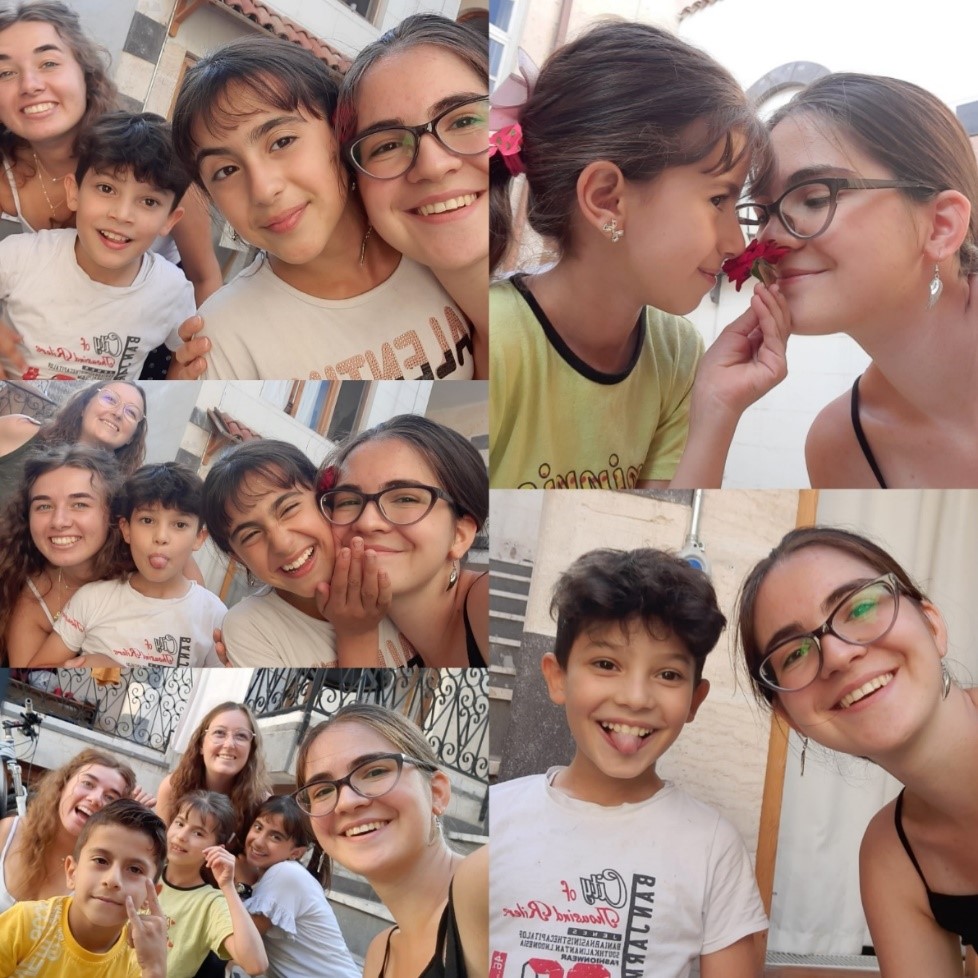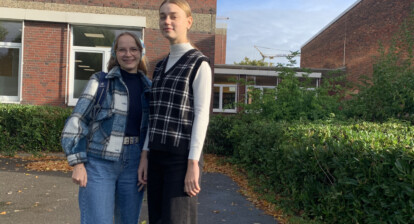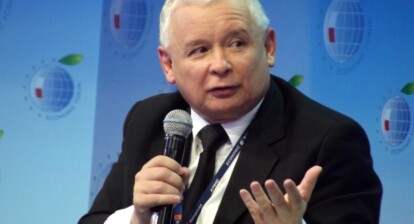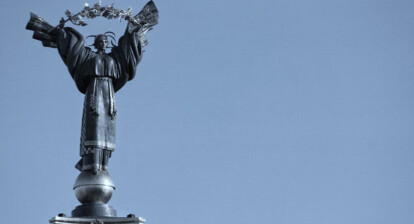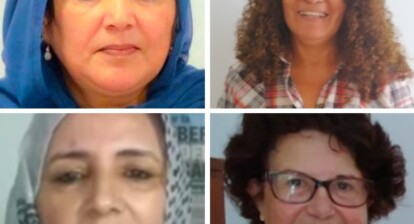Youth exchange programs are a chance for students to explore foreign cultures and reflect their own image of the other. Going abroad for the first time is unforgettable, especially when the journey is about working with Syrian refugees and living on the lands of ancient civilizations. Barbare from Georgia about her volunteering exchange program by the European Solidarity Corps in Gaziantep, Turkey.
As an 18-year-old student used to an active life, I felt trapped during the Covid-19 pandemic. Trying to see quarantine as an opportunity to think about what to do next, I started looking for the ways to pursue my goals. In fact, isolation helped me savor and appreciate the upcoming experience more. However, I never imagined my first experience abroad to be in the lands of the first ancient civilizations of the Sumer and Urartu.
Daring the Borderlife
One day, I came across BITISI’s post calling for volunteers for a short-term project in Turkey. The program was taking place at GEGED in Gaziantep, a volunteering center which mainly focuses on improving the life of disadvantaged local youth and refugees from Syria. Doing something for better always brought me joy and I have been attracted to old cities since years. Gaziantep is one of those, and well-known for its cuisine and culturally diverse population. Half of its four million inhabitants are refugees from Syria. The civil war in Syria began in 2011, as part of the “Arab Spring”. Peaceful protests against corruption were met by an armed response from the government. Trying to flee from the ongoing multi-sided crisis, according to UNICEF, there are now nearly 5.7 million registered Syrian refugees globally.
The fact that it was the first time for me to go abroad was one thing. The circumstance that my travel destination was the Turkish-Syrian border region worried my friends and family even more. I was also anxious about living next to the border of Syria and about working with Syrian refugees. However, I arranged documents, packed my suitcase and caught a flight.
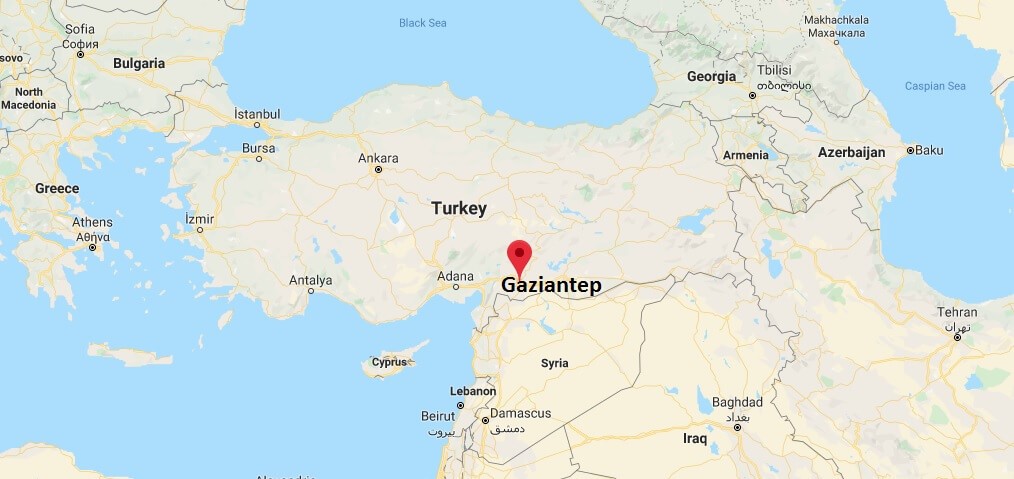
Gaziantep, a Turkish city close to the Syrian border (Photo: Public domain)
“Bear With Me”, Said the Exchange Program
My first days as a foreigner in a culture different from the one I lived in for my whole life, were a matter of patience, understanding and persistence. I was nervous about not fitting in mainly due to religious differences, as I was born and raised as an orthodox Christian. In some cases, the image I had in my mind turned out to be true. For example, my parts of practising archery were cut out from the video about volunteering activities because my armpit was visible. Even though it saddened me, I understood that I could not expect the locals in Muslim countries to tolerate my sleeveless shirts and shorts, even though summer there is scorching. So, in order to melt the ice, I started asking locals about their everyday lives: When and where would Adhan take place, about the chanting they sang and other details of their daily routine. My willingness to learn Turkish and using the simple phrases I had learnt from a Turkish series melted the ice quicker than I expected. One “efendim” (used as an answer when being called) made the sentence they wanted to say twice as long!
The Charming Chaos
My role as a volunteer was holding English, Art and Math classes with the refugee children, aged from 4 to 12, as well as participating in conversation clubs. The latter included speaking in English with local school and university students around my age to help them sophisticate their language skills. The voluntary service means a lot for children as some of them cannot attend schools at all.
Forming a bond with Syrians was hard as I had no prior knowledge of Arabic and the translator was not always present. However, even with their help, dealing with the children was not easy: Imagine a classroom with about ten kids. Some of them are drawing on each other’s faces, others are screaming and messing up the drawer of the toys or doing one-handed cartwheels, while I am running to grab my colleague who speaks Arabic to help me with the chaos. One girl is standing on a chair, pointing her little finger to the map on a wall – turns out she is asking me where I am from. I point to my hometown Tbilisi, causing her to shrug and say that she might never see me again.
No Words Needed
I interacted with the kids who had experienced so much misery and yet showered every volunteer with love, hugs and random ink drawings on our faces. We called them the Rainbow Kids, as we had different groups divided by colors. All of these activities helped me realise that language is not the most important thing when communicating to a person. Playing with my student while he was whispering his childish thoughts in my ear in Arabic, or laughing with a girl in my age who spoke only Turkish and used google translate to communicate – I now believe that you can overcome the language barrier if you do not consider it as one. In the end, not having a mutual language lost importance when I was teaching English words while pointing at the subjects they represented, drawing or playing with them.
A Local Answer to a Global Challenge
Even though the volunteers were not provided with the information which cities the refugees came from, how they migrated, exactly what they experienced – the language barrier might also be at fault in not being exposed to such details – their presence meant that they are part of a global challenge that GEGED decides to focus on. Founded in 2007 by young activists, the organisation has helped children to gain the education and skills they would not or hardly get otherwise. The organisation is limited in resources too, which is why they need volunteers and rely on our help. This is a nonstop process: my coursemate learned about GEGED from me and she is now there, carrying out her voluntary service and doing the job that unites people from different backgrounds. The existence of the shelters nearby just in case the unrest begins, opened my eyes by showing me how close the conflict still is.
European Solidarity Corps was not only about spending hours in the office, planning and preparing activities. Volunteers also had activities to get to know the Turkish culture better, like archery lessons, as this type of sport is passed down from their ancestors and is characteristic of their culture.
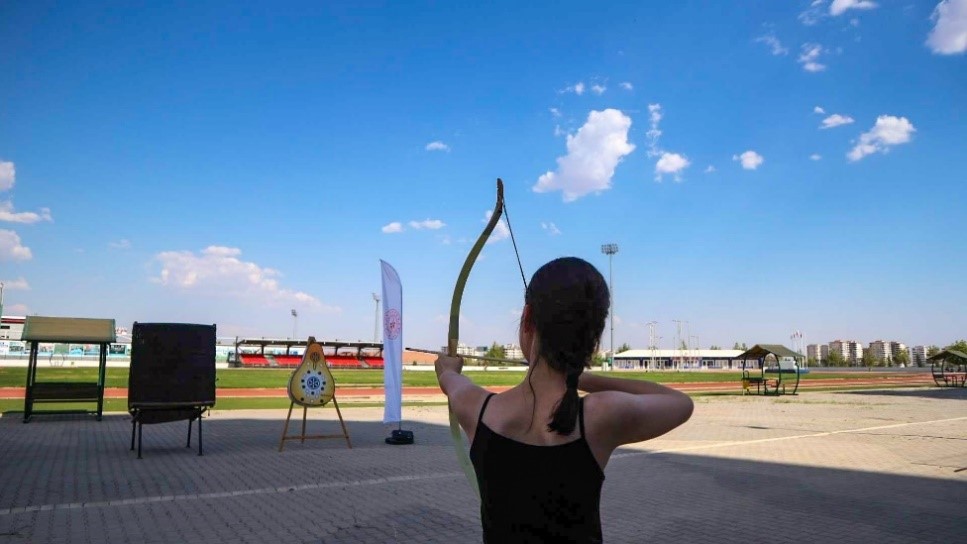
A peek into the archery lessons as one of the activities for the volunteers in Gaziantep (Photo:Private)
The Journey of a Puppet
On July 27th, a week after my arrival, I witnessed the beginning of Little Amal’s journey. Little Amal, whose name means “hope” in Arabic, is a giant puppet of a 9-year-old Syrian girl, constructed to raise awareness about the stories of refugee children repressed by Amal. She started her 5,500 km journey in Gaziantep and travelled across Greece, Italy, Switzerland, Germany, Belgium and France, reaching the UK on October 19th.
Little Amal was constructed by the Handspring Puppet Company for a project called “The Walk”. The director Stephen Daldry said that it was “perhaps the most ambitious public art project ever attempted”. As I saw myself, and also according to BBC news, it takes three puppeteers to bring her to life.
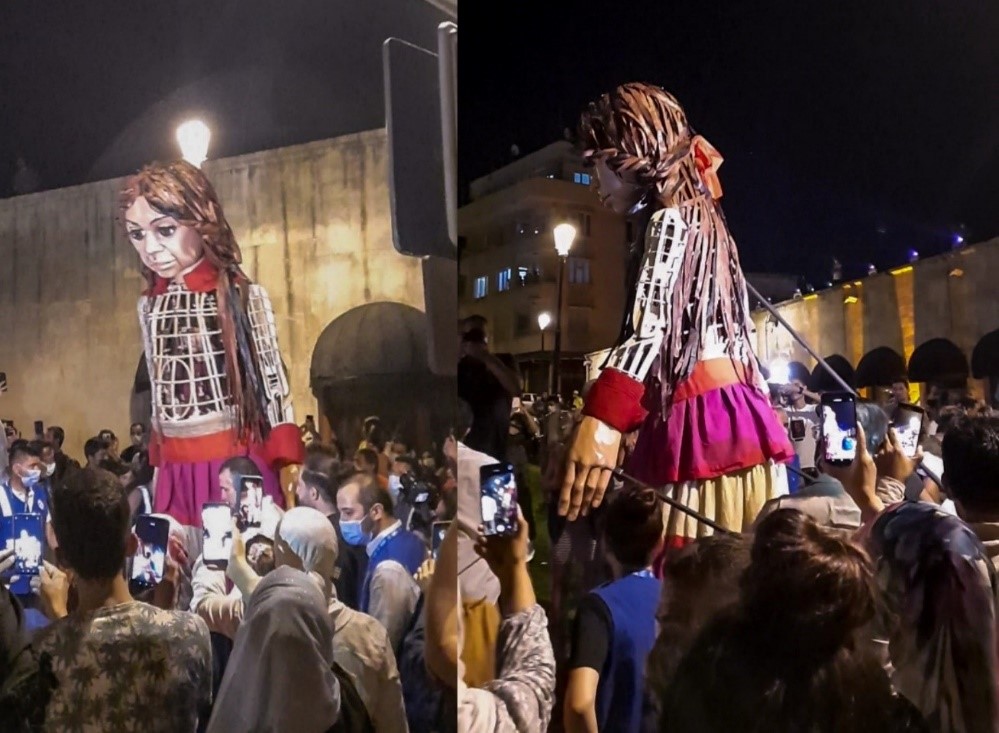
The beginning of Little Amal’s journey from Gaziantep, Turkey on July 27th, 2021, operated by the puppeteers (Photo:Private)
Between Hope and Despair
Seeing such a huge puppet in reality, with blinking eyes and moving mouth, made me feel anger and hopelessness due to the injustices of life, gratitude for never experiencing it myself, and, lastly, clutching the ray of hope that I was there to make a small change. I felt honored to see the start of Little Amal’s journey and be with the people she represents as well as those who were impacted by her story.
Happiness Is One Baklava Away
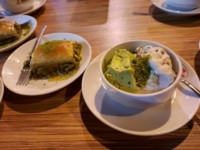
Baklava with pistachio at a local café in Gaziantep (Photo:Private)
Local food cannot be left out when talking about Turkey. Every exchange student found it delicious and I was no exception. Even though I was familiar with Turkish food back in my hometown, the taste of local food felt more genuine. After coming back to Georgia, I often crave Turkish pizza, called lahmacun, famous rahat-lokum, and Baklava, which Gaziantep is known for.
Making European Friends in the Middle East
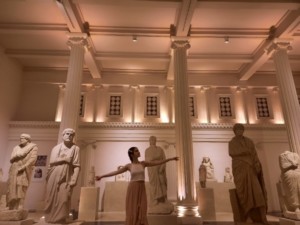
Visiting the Gaziantep Archeological Museum, The Hall of Roman Statues (Photo:Private)
Gaziantep is a city with a lot of museums. I was astonished to observe so many artefacts from the ancient world I had only seen online or in history textbooks, such as spears and pottery from the middle bronze age. I visited the Museum of Archeology, where the statues of Roman citizens, family burial chambers and artworks caught my attention.
It was in Turkey where I made friends from all over Europe for the first time. Most of the volunteers were from Europe. I met people from approximately ten countries, including the U.S., Portugal, Spain, Italy, Poland and Ukraine.
On A Magic Carpet Through Turkey
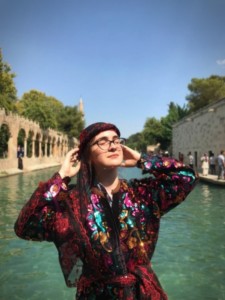
Wearing traditional clothes at lake “Balikli Göl” in Şanlıurfa (Photo:Private)
I had a chance to travel through South-Eastern Turkey, getting lost with other volunteers and wandering in Cappadocia, Mardin, Şanlıurfa and Diyarbakır. These regions are filled with diversity, ancient buildings, welcoming people and mountains of sweets.
I found travelling the easiest way of exploring the local culture. For instance, when I got the chance to wear the traditional clothes by the pool of prophet Abraham (called Ibrahim in Islam) known as Balikli Göl (literally translated as “lake of fish”), which is a special place for practicing Muslims. This gesture was an act of religious tolerance as the dark past between the orthodox Christian population in Georgia and Islamic countries has left the sensitive mark on the society.
Cappadocia is a popular tourist destination. Getting burnt in the sun while hiking in Love and Pigeon Valley in Cappadocia, riding horses while admiring the rocky landscape, enjoying sunrise while flying in the hot-air balloon – three days were enough to realise that travelling does definitely broaden the mind.
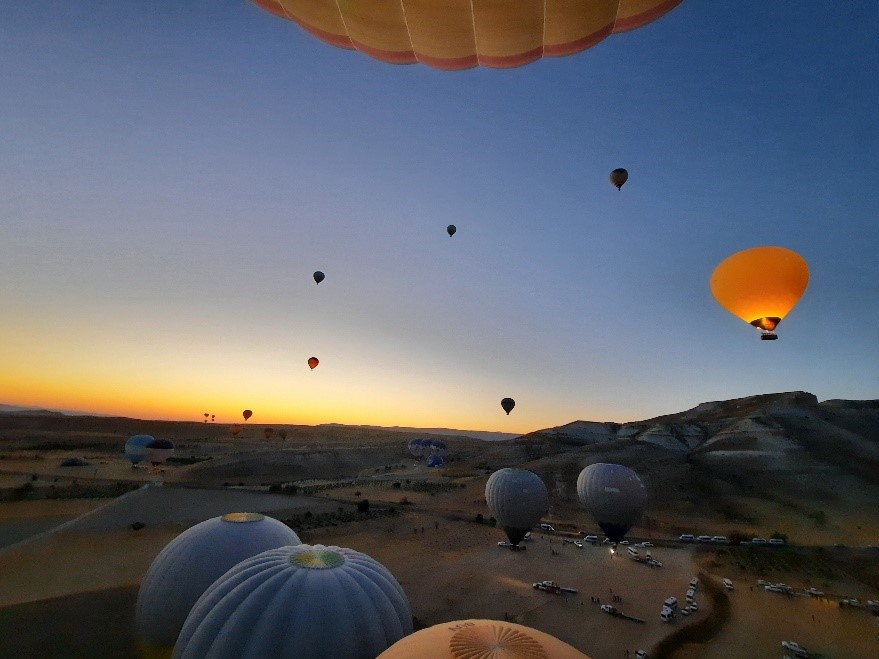
Observing the magnificent colours of sunrise from a hot-air balloon in Cappadocia (Photo:Private)
The Evil Eye Is Watching!
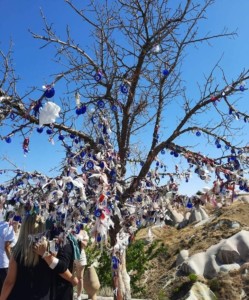
Tree full of Nazar Eye beads, Pigeon Valley, Cappadocia (Photo:Private)
The symbol I could see in every corner was Nazar, known as the evil eye talisman. It was on the tree near our hostel in Cappadocia, on the zip of the purse, in the basement of the organization building I lived in, in the shops or hung up on the trees in the gardens.
I already owned one even before I came to Turkey, a gift from my mother. Nazar found his way to Georgia hundreds of years ago due to Asian influence The tree full of the eye-beads reminded me of Georgian “ნატვრის ხე”, literally translated as “the wishing tree”, on which the locals attach colorful ribbons while wishing for something.
A Hard Goodbye
I knew that saying goodbye would become emotional. As my mentor said, every volunteer who held the keys of GEGED door could not forget the days spent there. Living in Asia with roommates from all over Europe made me grasp the diversity of Eurasia. Being the member of a big international team that aimed at changing the lives of refugees for better, also affected my view on refugees. Seeing these children, who endured God knows what and yet keep bright smiles on their faces, gave me a lot. Even though they are used to seeing us come and leave as a constant cycle, they are still hesitant of letting us go. This is why the little girl climbing on the chair to explore my hometown on the map seemed so sad to find out I lived in another country, worrying she might never see me again.
What Remains?
Months later, my coursemate is now sending me pictures with the kids I taught, and I am happy we can keep in touch. Volunteering is a great opportunity and it is a responsibility, too. By spreading awareness, a lot more people will understand that their help matters. Motivating them to be the change they want to see can lead to more peace, understanding and long-term results in intercultural relations.

